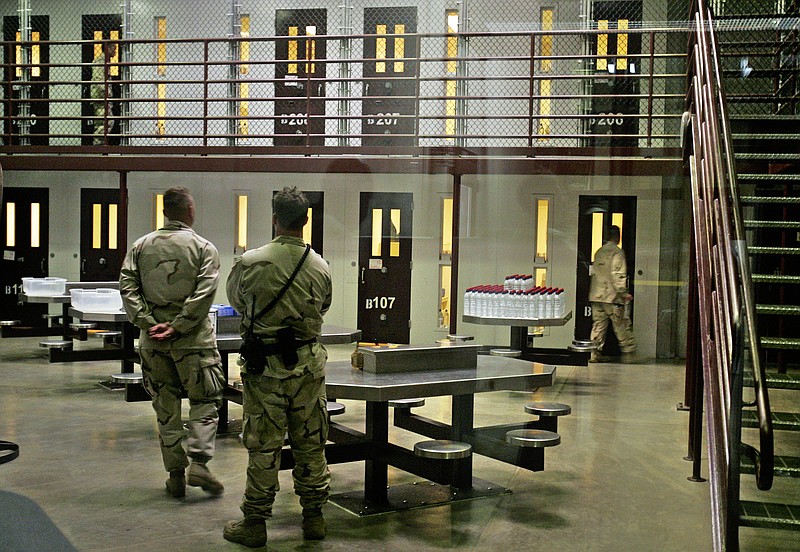GUANTANAMO BAY NAVAL BASE, Cuba (AP) - Top officials at the Guantanamo Bay detention center on Tuesday defended a raid that resulted in a violent clash with detainees, saying the operation was critical and the handful of injuries on both sides were minor.
Army soldiers with riot helmets and shields swept into recreation yards and met with resistance from several dozen prisoners, the leadership of the detention center said in an interview with journalists visiting the U.S. base in Cuba for the first time since Saturday's clash.
The confrontation ended within minutes, but not before two guards were struck in the head by prisoners and five of the prisoners were injured, including one struck by rubber pellets from what the military calls a "less-than-lethal" round fired from a modified shotgun.
"The appropriate amount of force was used for the situation," said Navy Rear Adm. John W. Smith, the commander of the detention center.
The guard force raided Camp 6 because the prisoners had for several weeks covered up 147 of the 160 security cameras, making it impossible to monitor them amid an ongoing hunger strike. Smith and members of his leadership team said they were concerned a prisoner might try to commit suicide and there were two attempted suicides since the protest began around Feb. 6.
To restore control, prison officials decided to move the prisoners in Camp 6 out of a communal area, where they eat together and freely associate for most of the day, into single cells from which they are released for two hours a day for recreation.
The troops who carried out the raid trained for three weeks to carry out the raid and were "prepared for any level of potential resistance," said Army Col. John Bogdan, who is in charge of the guard force. Prisoners had makeshift weapons, including broomsticks and batons made of plastic bottles and other materials.
Two guards were struck in the head during the confrontation but neither was seriously hurt and both have since returned to duty.
Five detainees were injured, including one who was hit by rubber pellets. Navy Capt. Richard Stoltz, who is in charge of the detainee hospital, said "there was no significant blood loss," and the prisoner was treated at the scene.
Another prisoner cut his head by banging his head on a cell door in what the military officials said was a self-inflicted wound. Stoltz said he was given about three stitches. Three others were scraped as guards secured the area and moved the men into the cells.

